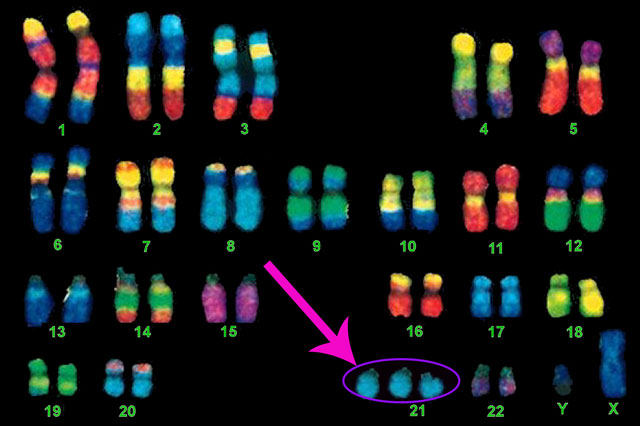Find the way to inactivate the additional chromosome of Down syndrome
2013/07/18 Galarraga Aiestaran, Ana - Elhuyar Zientzia Iturria: Elhuyar aldizkaria

Researchers at the University of Massachusetts have used the gene that inactivates the X chromosome to inactivate the additional chromosome of Down syndrome. Research has been done on cells and in vitro, an important step in the knowledge of the syndrome.
In fact, people with Down syndrome have three specimens of 21 chromosomes instead of two, leading them to have pathologies or peculiarities that characterize Down syndrome. One way to inactivate the additional chromosome is therefore of great help to know the cellular mechanisms associated with Down syndrome and seek new therapies against the damage caused by them.
To do this, the XIST gene has been the key of researchers. The intrinsic function of the XIST gene is to inactivate one of the X chromosomes in women. Using a synthetic enzyme (ZFN nuclease) that has the ability to bind to certain parts of the DNA, the XIST gene has been integrated into the appropriate place of the additional chromosome, which has shown that the functions performed by the additional chromosome are avoided. Among other things, they have shown that there are no defects in cell proliferation and neuronal differentiation.
In the words of Jeanne Lawrence, head of research, “We now have a powerful tool to identify and analyze cellular pathologies and mechanisms related to the additional expression of chromosome 21.” In addition, he has advanced that the study of Down syndrome at the cellular level will open the door to new therapies. It even suggests that long-term chromosomal therapies can be developed, as gene therapy is currently developing.
Together with researchers from the University of Massachusetts, researchers from California and Vancouver have also worked, and have published the study in the journal Nature.
Gai honi buruzko eduki gehiago
Elhuyarrek garatutako teknologia






